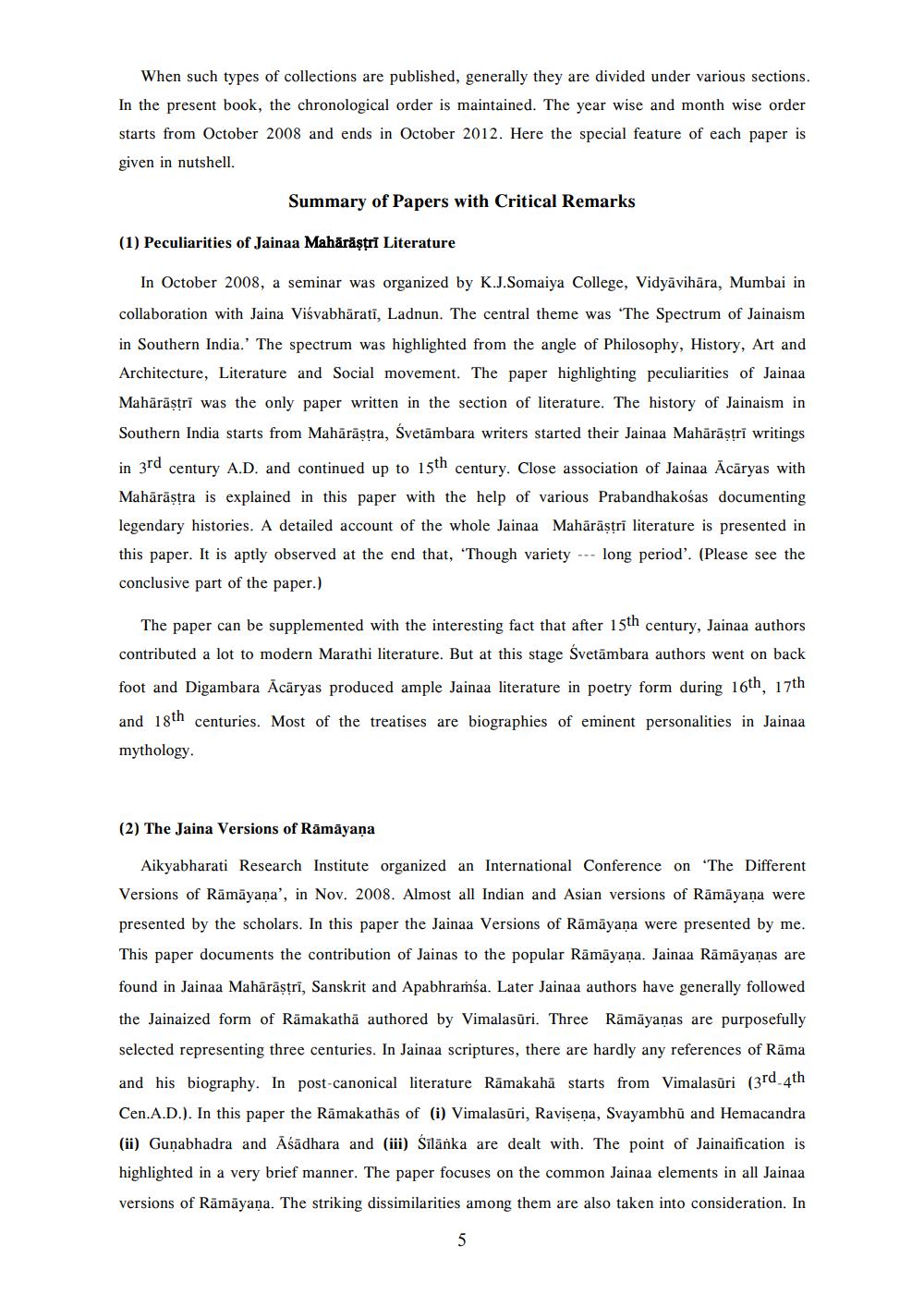Book Title: Collected Research Papers in Prakrit and Jainology Vol 02 Author(s): Nalini Joshi Publisher: University of Pune View full book textPage 5
________________ When such types of collections are published, generally they are divided under various sections. In the present book, the chronological order is maintained. The year wise and month wise order starts from October 2008 and ends in October 2012. Here the special feature of each paper is given in nutshell. Summary of Papers with Critical Remarks (1) Peculiarities of Jainaa Maharastri Literature In October 2008, a seminar was organized by K.J.Somaiya College, Vidyāvihāra, Mumbai in collaboration with Jaina Visvabhārati, Ladnun. The central theme was 'The Spectrum of Jainaism in Southern India. The spectrum was highlighted from the angle of Philosophy, History, Art and Architecture, Literature and Social movement. The paper highlighting peculiarities of Jainaa Mahārāstrī was the only paper written in the section of literature. The history of Jainaism in Southern India starts from Mahārāstra, Svetāmbara writers started their Jainaa Mahārāştri writings in 3rd century A.D. and continued up to 15th century. Close association of Jainaa Ācāryas with Mahārāstra is explained in this paper with the help of various Prabandhakośas documenting legendary histories. A detailed account of the whole Jainaa Mahārāstrī literature is presented in this paper. It is aptly observed at the end that, 'Though variety --- long period'. (Please see the conclusive part of the paper.) The paper can be supplemented with the interesting fact that after 15th century, Jainaa authors contributed a lot to modern Marathi literature. But at this stage Svetāmbara authors went on back foot and Digambara Acāryas produced ample Jainaa literature in poetry form during 16th, 17th and 18th centuries. Most of the treatises are biographies of eminent personalities in Jainaa mythology. (2) The Jaina Versions of Rāmāyana Aikyabharati Research Institute organized an International Conference on 'The Different Versions of Rāmāyana', in Nov. 2008. Almost all Indian and Asian versions of Rāmāyaṇa were presented by the scholars. In this paper the Jainaa Versions of Rāmāyana were presented by me. This paper documents the contribution of Jainas to the popular Rāmāyaṇa. Jainaa Rāmāyaṇas are found in Jainaa Mahārāstrī, Sanskrit and Apabhramba. Later Jainaa authors have generally followed the Jainaized form of Rāmakathā authored by Vimalasūri. Three Rāmāyanas are purposefully selected representing three centuries. In Jainaa scriptures, there are hardly any references of Rāma and his biography. In post-canonical literature Rāmakahä starts from Vimalasuri (3rd 4th Cen.A.D.). In this paper the Rāmakathās of (i) Vimalasūri, Ravişena, Svayambhū and Hemacandra (ii) Gunabhadra and Aśādhara and (iii) Silānka are dealt with. The point of Jainaification is highlighted in a very brief manner. The paper focuses on the common Jainaa elements in all Jainaa versions of Rāmāyana. The striking dissimilarities among them are also taken into consideration. InPage Navigation
1 ... 3 4 5 6 7 8 9 10 11 12 13 14 15 16 17 18 19 20 21 22 23 24 25 26 27 28 29 30 31 32 33 34 35 36 37 38 39 40 41 42 43 44 45 46 47 48 49 50 51 52 ... 170
